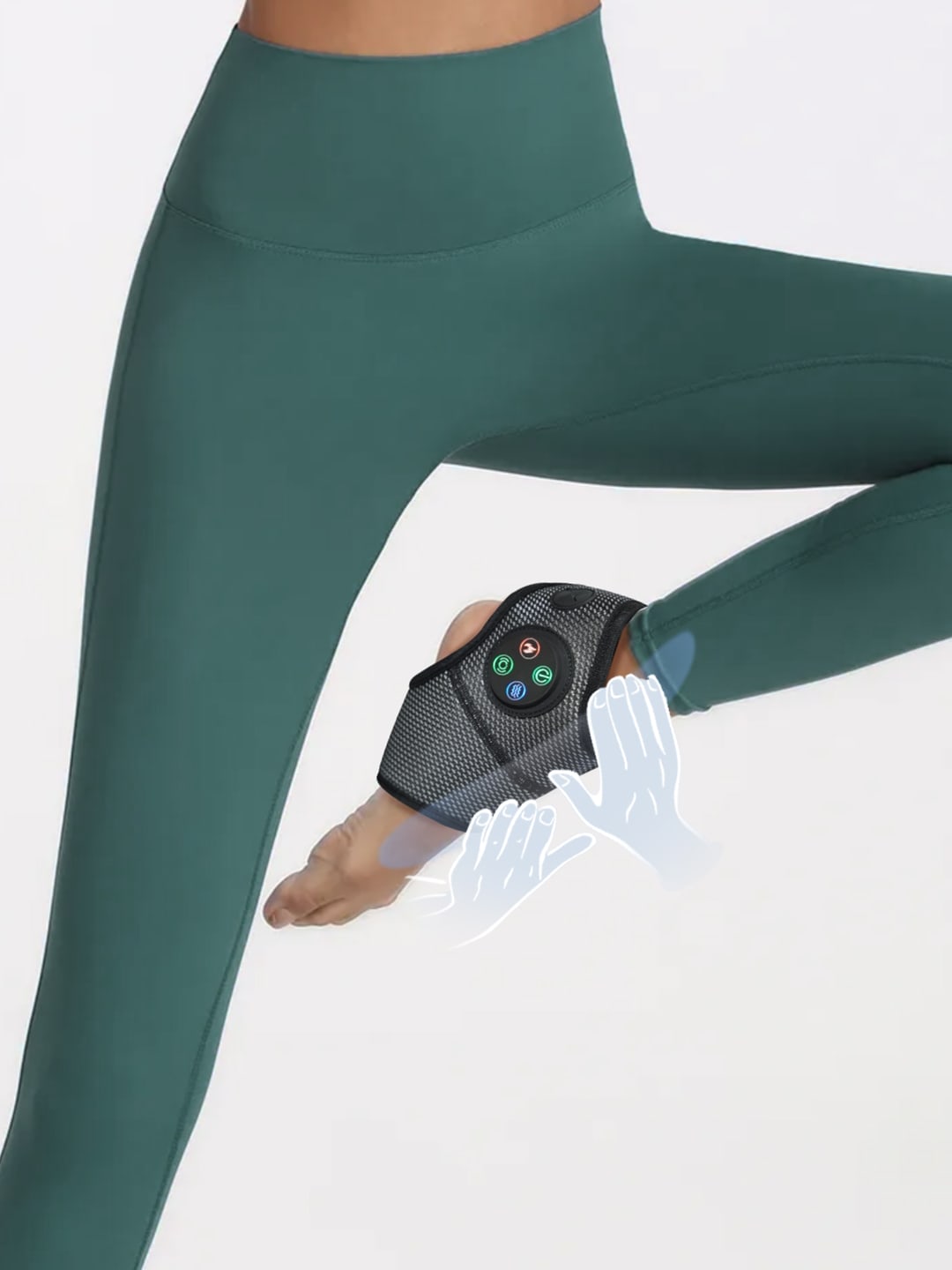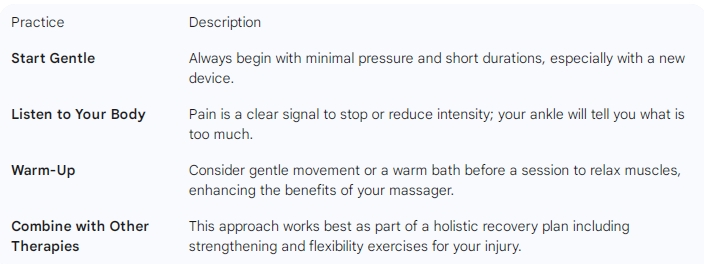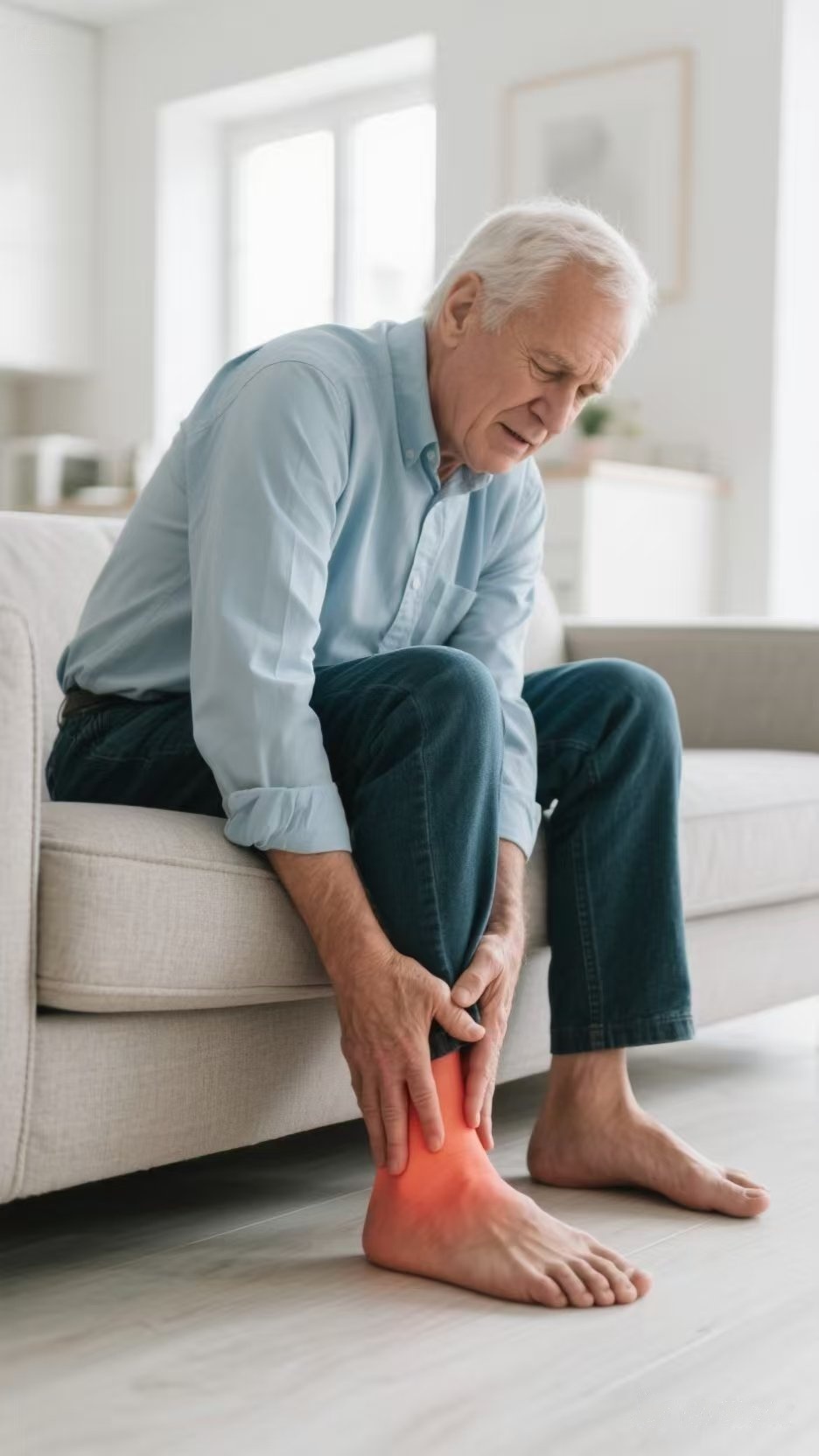Can a Leg Foot Massager Heal Your Sprained Ankle?
- By Grace
- Updated on
A sudden twist, a misstep while out for a run, and suddenly your ankles hurt after running or even just walking. If you’re an active individual, especially one prone to sports injuries, you know the frustration of a sprain. The question that often arises, once the initial throbbing subsides, is: can therapeutic massage truly bring it back to full strength? In Canada, from bustling city clinics to quiet home recovery, the role of this therapy in ankle recovery is a topic of both hope and caution. Let's delve into the nuances of this approach, exploring both professional techniques and the growing popularity of at-home solutions like recovery devices.
What Happens When You Sprain an Ankle? Understanding the Injury
When you suffer a sprained ankle, it typically means the ligaments supporting your ankle joint have been stretched or torn. These fibrous bands are crucial for stability, and injury to them can lead to pain, swelling, bruising, and difficulty bearing weight. For someone regularly engaging in sports, whether it's soccer, basketball, or even just hitting the trails, this can be a significant setback that keeps you sidelined. Understanding the severity and nature of the injury is the first step toward effective recovery.
The healing process unfolds in stages. Initially, there's the acute inflammatory phase, characterized by swelling and intense pain—your body's immediate response to trauma. Following this, the repair and remodeling phases begin, where new collagen fibers are laid down to heal the damaged ligaments. Understanding these phases is crucial because the timing and intensity of any intervention, including manual therapy or the use of a home device, dramatically impact the outcome.
- Acute Phase: Immediate injury to 2-3 days. Focus on R.I.C.E. (Rest, Ice, Compression, Elevation).
- Sub-Acute Phase: 3 days to 2 weeks. Gentle movement, initial rehabilitation exercises.
- Chronic/Rehabilitation Phase: Beyond 2 weeks. Strengthening, balance, full return to activity.
The Science Behind Ankle Therapy for Healing: A Balanced Perspective
So, where does this therapy fit into this recovery timeline? From a scientific standpoint, light massage can play a supportive role, particularly after the acute inflammatory stage has passed. This early intervention, often a part of comprehensive rehabilitation programs offered in clinics across Canada, aims to promote blood circulation to the injured area. Enhanced blood flow delivers vital nutrients and oxygen, which are essential for tissue repair, and helps remove metabolic waste products. Using a gentle home device during this phase can complement professional guidance.
However, and this is really, really important, if the therapeutic force is too strong, there is a substantial risk of aggravating the injury. Applying excessive pressure during the initial stages can increase inflammation, delay healing, or even cause further damage to delicate healing tissues. This is why Canadians dealing with a sprain are always advised to exercise caution and seek professional guidance from a physiotherapist or athletic therapist to ensure safe and effective treatment, even when considering a personal recovery tool.
Types of Ankle Therapy and Support for Recovery: From Clinics to Your Home
When considering ankle therapy, it's important to distinguish between professional manual techniques and at-home solutions. Licensed practitioners use targeted methods like effleurage to reduce swelling and improve range of motion, which is crucial for athletes recovering from injury. In addition to professional guidance, at-home massagers, such as those from the Klcosy brand, offer functions like air pressure, heat, vibration, and red light therapy. These tools, available in the Canadian market, can help manage everyday discomfort and relax muscle tension around the joint. Complementary tools like an ankle brace or ankle support are also vital for providing stability and preventing re-injury during rehabilitation, working in tandem with both professional and at-home therapies to ensure a safe return to sports.

Practical Tips for Integrating Therapy into Your Recovery Journey
For athletes eager to return to action, integrating ankle therapy must be done smartly. The first step is patience: wait for the initial intense pain and swelling to subside. When you begin, start incredibly gently with light, circular motions around the swollen area, gradually moving closer as comfort allows. Using a home device offers a controlled, consistent approach, but always start with the lowest intensity settings. Listen to your body; any increase in pain or discomfort means you should stop immediately. These therapeutic tools are best for muscle relaxation or managing residual stiffness once the primary injury has largely healed. Remember, consistency in your rehabilitation exercises, alongside cautious therapy and the right home tool, is key for a strong recovery.

When to Seek Professional Guidance for Your Ankle Sprain: Beyond Home Devices
While self-care and home devices offer comfort, there are clear instances when professional evaluation is non-negotiable. If you experienced severe pain immediately after the injury, heard a popping sound, or cannot bear any weight on your foot, it's crucial to consult a healthcare professional promptly. These could be signs of a more severe sprain, or even a fracture, which requires different management entirely, far beyond what a home device can provide.
Even for less severe sprains, a physiotherapist or sports medicine physician can provide an accurate diagnosis, guide you through a tailored rehabilitation program, and advise on the safe integration of massage. They can teach you specific techniques and help you understand when to progress or pull back, ensuring your recovery is not just fast, but thorough, helping you prevent re-injury and get back to your peak performance without unnecessary risks. Seeking their expertise is a sign of being truly dedicated to your long-term wellness, complementing your at-home therapy effectively.
Frequently Asked Questions About Leg and Foot Recovery Tools
Can a foot massager reduce swelling in feet and ankles?
Yes, a therapeutic device can potentially help reduce minor swelling in feet and ankles, especially that caused by poor circulation or fluid retention from prolonged standing or sitting. The gentle pressure and vibration can stimulate blood flow and lymphatic drainage, assisting your body in moving excess fluid away from the area. However, for swelling due to acute injury like a sprain, it should only be used very gently and well after the initial inflammatory phase, and always under professional guidance to avoid aggravating the injury. Choosing the right device with gentle settings is key.
Do these devices help with tired, aching feet after a long day?
Absolutely! This is one of the primary benefits many users report. After a long day on your feet, especially if your ankles are sore after extensive walking, a good device can provide significant relief. The various massage techniques, from kneading to air compression, can help relax tense muscles, improve circulation, and soothe general aches and pains, leaving your feet feeling refreshed and revitalized. It’s like a mini spa treatment for your feet, right in your own home, making it a valuable addition to your routine!
What are the overall health benefits of using a foot recovery tool regularly?
Regular use of a quality device offers several potential health benefits beyond just immediate relief. It can contribute to improved blood circulation throughout the lower extremities, which is beneficial for overall vascular health. Many users also experience reduced muscle soreness, decreased stress levels, and even better sleep due to the relaxing effects. While it's not a medical treatment for specific conditions, incorporating such a tool into your routine can be a wonderful way to boost your general well-being and promote daily relaxation, contributing to a more balanced and fulfilling life. It's a simple, yet effective, form of self-care.
Golden Sentence: While a sprain demands patience and professional care, strategic therapy can be a valuable ally in your journey back to full activity, acting as a supportive hand, not a solo restorer.
In conclusion, when it comes to restoring a sprained ankle, therapeutic massage isn't a magical cure-all, but it can be a highly effective component of a well-rounded recovery plan. Whether it's through the expert hands of a Canadian therapist or the thoughtful use of a personal device like Klcosy, the key lies in timing, technique, and caution. As a consultant for family health product selection, I always emphasize that while home tools offer convenience and comfort, they should complement, not replace, professional medical advice, especially when dealing with injuries. Empower yourself with knowledge, listen to your body, and don't hesitate to seek guidance to ensure a safe and strong return to your active life.





